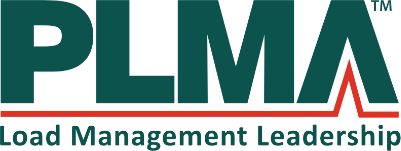Hawaiian Electric seeks information on private partners to boost electricity demand managementWednesday, December 3, 2014 Demand Response will save customers money while increasing clean energy use HONOLULU, December 2, 2014 – The Hawaiian Electric Companies are looking for information on private companies that can join in promoting demand response, programs for businesses and individuals to collaborate with utilities to manage their electricity demand. Customer-sited solar and other renewables are a growing part of generation capacity on each island. Managing their own demand in response to utility requests is another way for customers to save on their electric bills while supporting more clean energy, reducing use of expensive fossil fuel and relieving stress on the electric grid. Interested companies are welcome to respond to a request for information (RFI) to provide data on their level of interest, expertise and experience in executing a variety of demand response programs. The RFI is a key step in expanding and enhancing the companies’ existing demand response programs. "With demand response, customers get financial rewards that lower their monthly bills. We reduce use of more expensive, oil-fired generators to meet electricity needs and have greater ability to support renewable energy,” said Shelee Kimura, Hawaiian Electric vice president for corporate planning and business development. “Demand response programs are beneficial for our customers and the environment." In July, the Hawaiian Electric Companies sent the Hawai‘i Public Utilities Commission an “Integrated Demand Response Portfolio Plan” (IDRPP) proposing a “… portfolio of demand response programs that appeals to a wide variety of residential and commercial customers, reduces the cost of electricity, and enables higher level of renewable energy without compromising service reliability.” The plan envisions diverse programs that benefit all customers, including those who do not directly participate in demand response. These benefits include reduced overall energy costs and reduced waste of less expensive renewable energy output. For the utilities, DR offers another tool to increase operational flexibility to ensure safe and reliable electric service for all customers, large and small. In August, the PUC invited public comment on the demand response plan and Hawaiian Electric found the 18 responses to be constructive. Hawaiian Electric then held a public forum in October, inviting non-vendor parties to an informal discussion of demand response, before issuing the RFI. The RFI states, “We are pursuing DR programs that can be readily implemented, comprise a diverse set of features, employ customer equipment, meet grid service requirements, and can be adroitly administered to maintain system reliability. DR programs will be deployed in each of the Companies’ operating systems, although the DR resource needs in each system may be different based on the existing and future power supply needs in that system.” The RFI was sent to those who already expressed interest but is open to all qualified parties. It is available on line at www.hawaiianelectric.com under Demand Response on the Clean Energy pages or by contacting [email protected]. The deadline to respond is December 15, 2014. Based on the information received the utilities will be able to design and effectively execute their procurement processes, with the goal of having more demand response programs online by January 2016, or sooner. BACKGROUND: In addition, by offering lower or higher prices during certain times of the day, some demand response programs could encourage customers to shift energy use to times when solar or wind produces the most power. This could optimize wind and solar power that might otherwise be wasted. The Hawaiian Electric Companies plan to increase demand response in cooperation with others, including Hawaii Energy, the PUC-appointed public benefits fund administrator that manages energy efficiency programs, including rebates for solar water heating and energy efficient appliances. Also, the utilities are building on the partnership with Energy Excelerator, a resource provider for clean-energy startups, to continuously enhance the use of demand response by using emerging technologies. New demand response programs for customers on O‘ahu, Maui and Hawai‘i Island, and later for Moloka‘i and Lana‘i will complement large-scale energy storage as another way to support clean energy while maintaining reliable service. Hawaiian Electric is also currently reviewing bids for large-scale energy storage for O‘ahu. |
